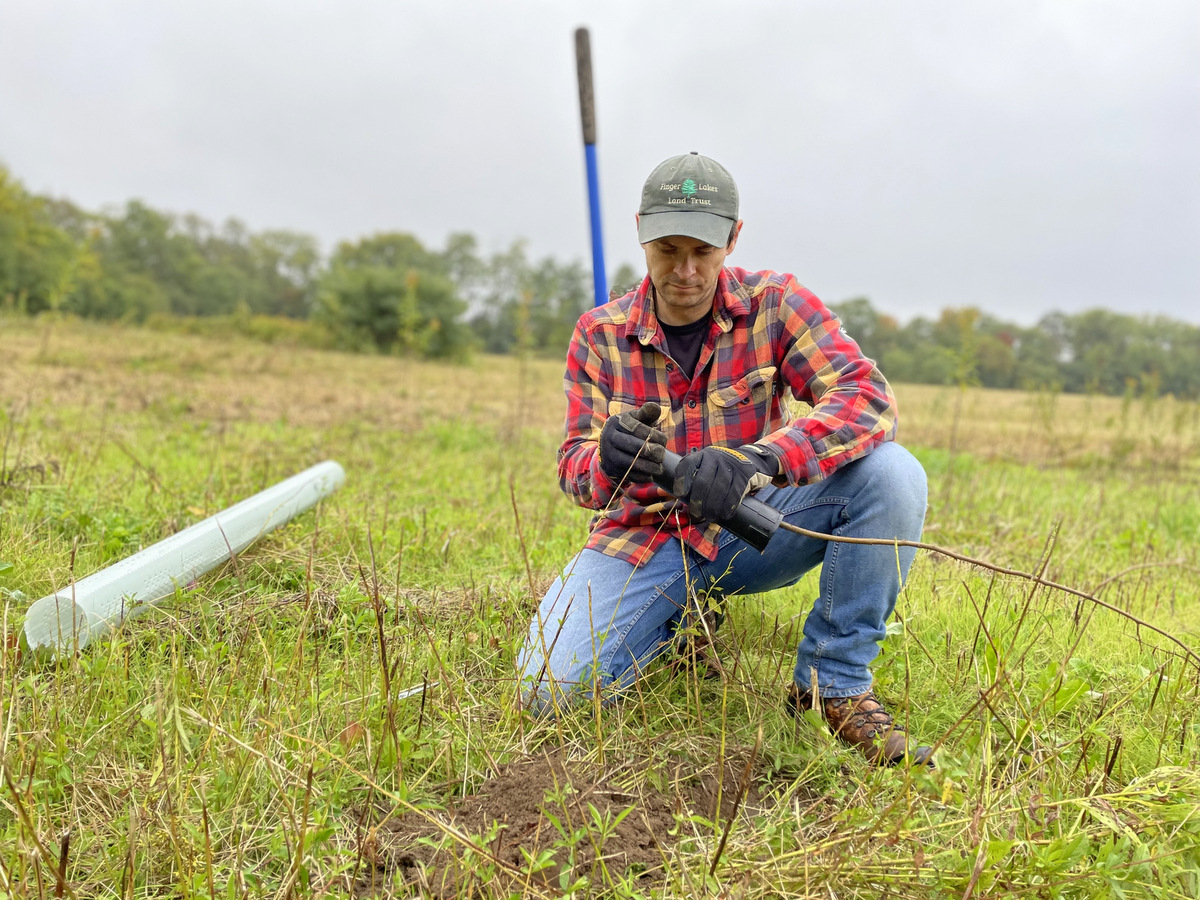The Finger Lakes Land Trust (FLLT) partnered with SUNY College of Environmental Science and Forestry (SUNY-ESF) on a trial planting of the American chestnut tree (Castanea dentata).
The FLLT’s Owasco Bluffs Nature Preserve in Niles, Cayuga County, was chosen as a suitable location for the reintroduction of twenty wild-type trees.

Photo: Max Heitner
Staff from FLLT and SUNY-ESF will continue to monitor the trees to evaluate their growth and survival. The American chestnut was once a prolific species in eastern North America until the late nineteenth century when the chestnut blight fungus was accidentally introduced to New York City in a shipment of chestnut trees from Asia. By the mid-twentieth century, the blight decimated the American chestnut tree population.
Often reaching heights of 100 feet and four to five feet in diameter, the American chestnut was used for centuries by indigenous peoples as a source of food and medicine. European settlers used its rot-resistant, straight-grained wood for building materials and its bark for tanning leather.
A keystone species, the American chestnut is a fast-growing tree whose nuts once fed people as well as wildlife and livestock. Chestnuts were harvested and shipped to urban agricultural markets, providing income for rural communities. Until the arrival of the blight, the chestnut was a major driver of many rural economies in the Appalachian region.
Overlooking the eastern shore of Owasco Lake, the 74-acre Owasco Bluffs Preserve protects over 1,100 feet of undeveloped, pristine shoreline. The preserve features forested bluffs overlooking the lake as well as wetlands, meadows, and a rugged gorge. It is the first FLLT preserve in the Owasco Lake watershed, and only the third publicly accessible conservation area on the lake itself.

